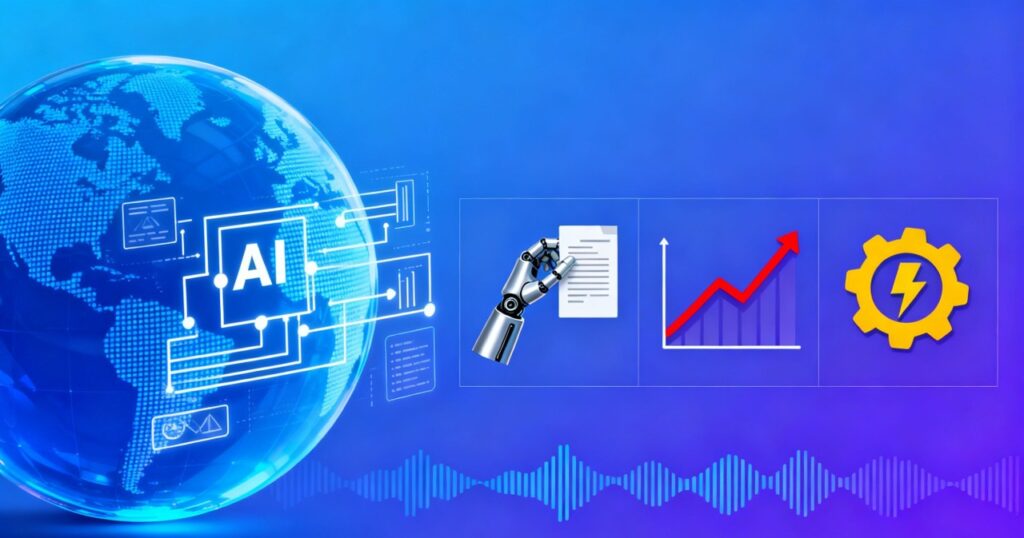In today’s rapidly accelerating wave of globalization, an increasing number of small and medium-sized cross-border e-commerce businesses and overseas-bound brands are encountering a once-in-a-lifetime opportunity. However, language barriers, inefficient marketing, difficulty capturing market trends, and complex operational processes have become major obstacles to further expansion. By 2025, AI technology is fundamentally **redefining cross-border operational logic**, enabling smaller enterprises to achieve the agility of "small and beautiful" while delivering the speed and scale of "large and powerful."
Unique product advantages may be lost in vast overseas markets due to awkward translations; a budget of hundreds of thousands yields little impact on core audiences; when a product category goes viral overseas, delayed information turns companies into mere followers—these growing pains are now being resolved by AI.
First, AI-powered translation breaks free from the constraints of literal conversion. Next-generation AI translation tools possess strong **context awareness** and **cultural adaptation** capabilities. They not only accurately convert text across dozens of languages but also leverage big data to analyze social media trending terms and user reviews in target markets, intelligently matching localized expressions. For example, translating “high cost-performance” into the Western-preferred “value for money,” or automatically avoiding religiously sensitive terms in the Middle East; precisely aligning “mosquito-proof curtains” with Southeast Asian users’ common search term “mosquito net” can boost keyword search volume by over 30%. A home goods brand doubled its page views in Indonesia and increased order volume by 25% month-on-month solely through AI-driven translation and localization optimization.

Second, AI-powered marketing ensures overseas campaigns hit their mark with precision. Traditional cross-border marketing often relies on experience-based judgment, making it difficult to accurately target dynamic overseas markets. AI-driven marketing tools, however, analyze millions of behavioral data points to automatically identify target audience profiles—whether it's 25–35-year-old women in Southeast Asia favoring portable small appliances or Western consumers prioritizing eco-sustainability. These tools can then generate ad creatives tailored to local aesthetics. From color schemes and copywriting styles to short video scripts and even KOL tone of voice, AI can simulate them intelligently. A well-known 3C brand improved its advertising ROI by 40% through real-time AI optimization and reduced campaign costs by 15% during Double Eleven.
Furthermore, AI market intelligence tools act as a “global radar,” providing **early warnings** on overseas market trends. By continuously collecting social media buzzwords, search engine data, and competitor activity, AI can identify the next wave of breakout products 3–6 months in advance. At the end of 2024, AI tools detected a surge in European searches for “solar-powered portable camping gear,” enabling multiple outdoor brands to stock up before peak season and achieve monthly sales exceeding one million units. Another Chinese outdoor equipment company leveraged AI early-warning signals to launch barbecue kits tailored for the Middle East just before Ramadan, resulting in a 60% sales increase during the holiday period.
Finally, AI operations assistants are automating tedious and repetitive cross-border workflows. Intelligent customer service responds 24/7 in multiple languages, resolving up to 80% of standardized inquiries; AI-powered ERP systems synchronize inventory across global platforms in real time and automatically flag “overselling risks”; negative review handling can also be delegated to AI—generating apology templates based on keyword analysis and offering improvement suggestions. After adopting an AI-driven operations solution, a clothing company reduced labor costs by 30%, allowing its team to focus more on product development and brand building, achieving nearly double sales growth within six months.
Standing at the crossroads of 2025, will you choose passive “following” or proactive “embracing” of AI? The answer is already clear: AI does not replace humans—it liberates them from inefficient tasks, allowing businesses to focus on core competencies. Small and medium-sized enterprises that proactively adopt AI are leveraging technology as a force multiplier to access global markets with seamless language adaptation, precise marketing, sharper trend sensitivity, and streamlined operations. Globalization is no longer the exclusive domain of large corporations—“small and beautiful” businesses can now achieve the speed and strength of the giants.